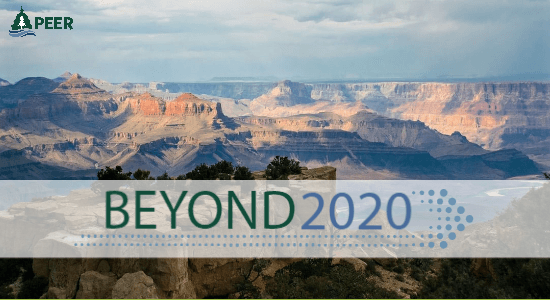PEER Outlines Plan to Get Park Service Back on Track
Since its inception over a century ago, the National Park Service has been tasked with conserving large swaths of America’s incomparable scenery, protecting vulnerable wildlife, and preserving our natural and historic heritage for current and future generations. The environmentalist Wallace Stegner famously called the National Parks this country’s best idea: “Absolutely American, absolutely democratic, they reflect us at our best rather than our worst.”

Joshua Tree National Park
Over the years, however, the worst has been ascendant. Tarnished by short-sighted and unimaginative leaders, rapacious corporate encroachment, and unfocused protection and planning measures, the National Parks are rapidly losing their distinctive character.
This downturn comes at a time when wildlife conservation and egalitarian access to nature are more crucial than ever. The dangers posed by climate change to all varieties of natural resources should make preserving the parks’ ecosystems for future generations a top priority. What’s more, the COVID-19 pandemic has thrown into stark relief this generation’s need for safe, accessible outdoor recreation space—a need that will not abate when this particular crisis finally does.
With more than 25 years’ experience working with NPS whistleblowers and fighting for greater transparency in the agency’s actions, PEER has developed a white paper outlining critical steps that the NPS must take in order to return the agency to its original mission. We welcome your comments and your thoughts about how to improve the NPS.
Important measures that PEER is recommending include:
Updating General Management Plans for Each Park
Every national park unit is legally required to have an up-to-date general management plan (GMP) in place to help guide park planning and decision-making. The process of creating a GMP also includes opportunities for public involvement—a crucial aspect of the NPS’ role as steward of a public resource. More than half of park units currently have outdated GMPs, or none at all; recommitting to this basic planning process is a fundamental requirement for thoughtful and responsible management.
Establishing Reasonable Park Carrying Capacities
Equal access to the parks should not be confused with no-holds-barred overcrowding. Without any common-sense measures to control the flow of visitors, parks face inevitable degradation to trails and facilities, disturbances to wildlife, and increased difficulty in addressing maintenance and repair issues in a timely manner. Overcrowding also destroys the solitude and peace for which many seek out the parks in the first place. Working out logical and nondiscriminatory carrying capacities, as required by the 1978 National Parks and Recreation Act, will help the NPS fulfill its conservation mandate.
Fulfilling the Parks’ Wilderness Mandate
Preserving areas of park backcountry as designated wilderness is necessary to prevent untrammeled commercial and visitor intrusion from disturbing wildlife and disrupting ecosystems. NPS has failed to act on proposals and recommendations that would clear the way for statutory protection of over 26 million additional acres of park wilderness lands. The agency must resume work on abandoned wilderness designations, protect existing wilderness, and shift more staff time and resources into managing the national wilderness program.
Supporting Park Law Enforcement Rangers
Over the past decade, law enforcement staffing in national parks has fallen even as visitation has skyrocketed and new parks have been added. Rangers are responsible not only for enforcing federal laws and regulations, but also for public-safety duties such as search and rescue missions, emergency medical services, and firefighting. In order to keep visitors and themselves safe, rangers are in critical need of proper screening, training, career-long support, and a clear line of command back to officials in Washington, D.C. who understand the dangers of their job better than local park administrators.
Protecting Park Wildlife
Beyond addressing overcrowding and wilderness preservation, NPS has numerous opportunities to protect wildlife from injurious and lethal effects of visitation and nearby activities. Enforcing mitigation measures like variable message signs on park roads would help decrease the number of vehicle collisions with animals including bison and black bears. Other species have been significantly impacted by hunting and trapping outside park boundaries—in Denali National Park and Preserve, a visitor’s chance of seeing a wolf in the wild has dropped from 45% to 1% over the past decade. By ending its abdication of wildlife management and reinstating no-trap buffer zones around national parks, NPS can help rejuvenate these populations and improve visitor experiences at the same time.
The National Parks are not a single-use resource to be depleted and discarded, but a massively valuable piece of American heritage. Your feedback and suggestions are appreciated as we refine this blueprint that Congress, NPS officials, and the next administration can follow in order halt the Parks’ degradation, and return the NPS to its fundamental role of responsible stewardship.
Read the full paper:
Beyond 2020: National Park Service »
 Eleanor Hildebrandt is a legal intern with PEER and a student at Georgetown University Law Center, where she focuses on administrative law and environmental justice.
Eleanor Hildebrandt is a legal intern with PEER and a student at Georgetown University Law Center, where she focuses on administrative law and environmental justice.
